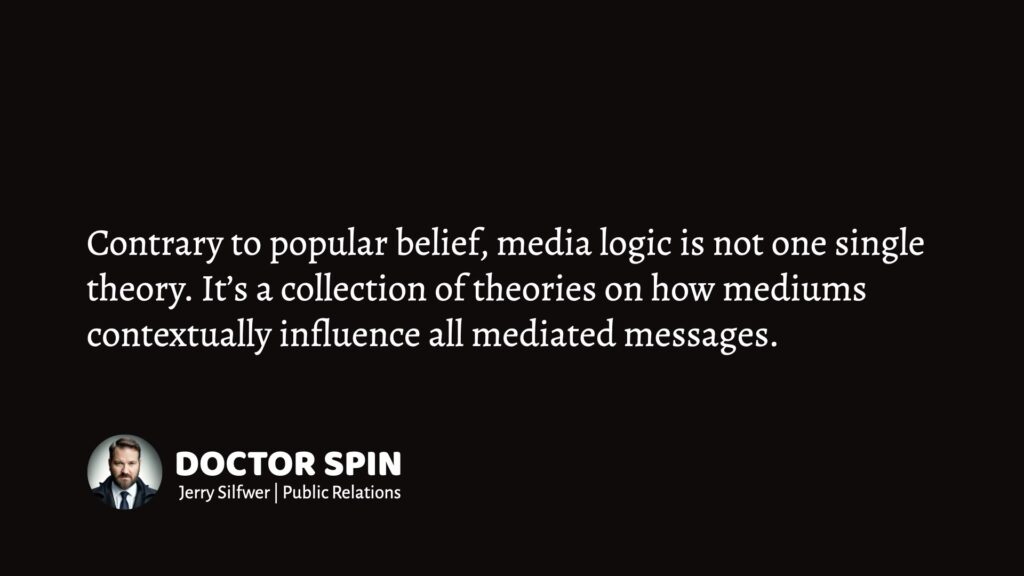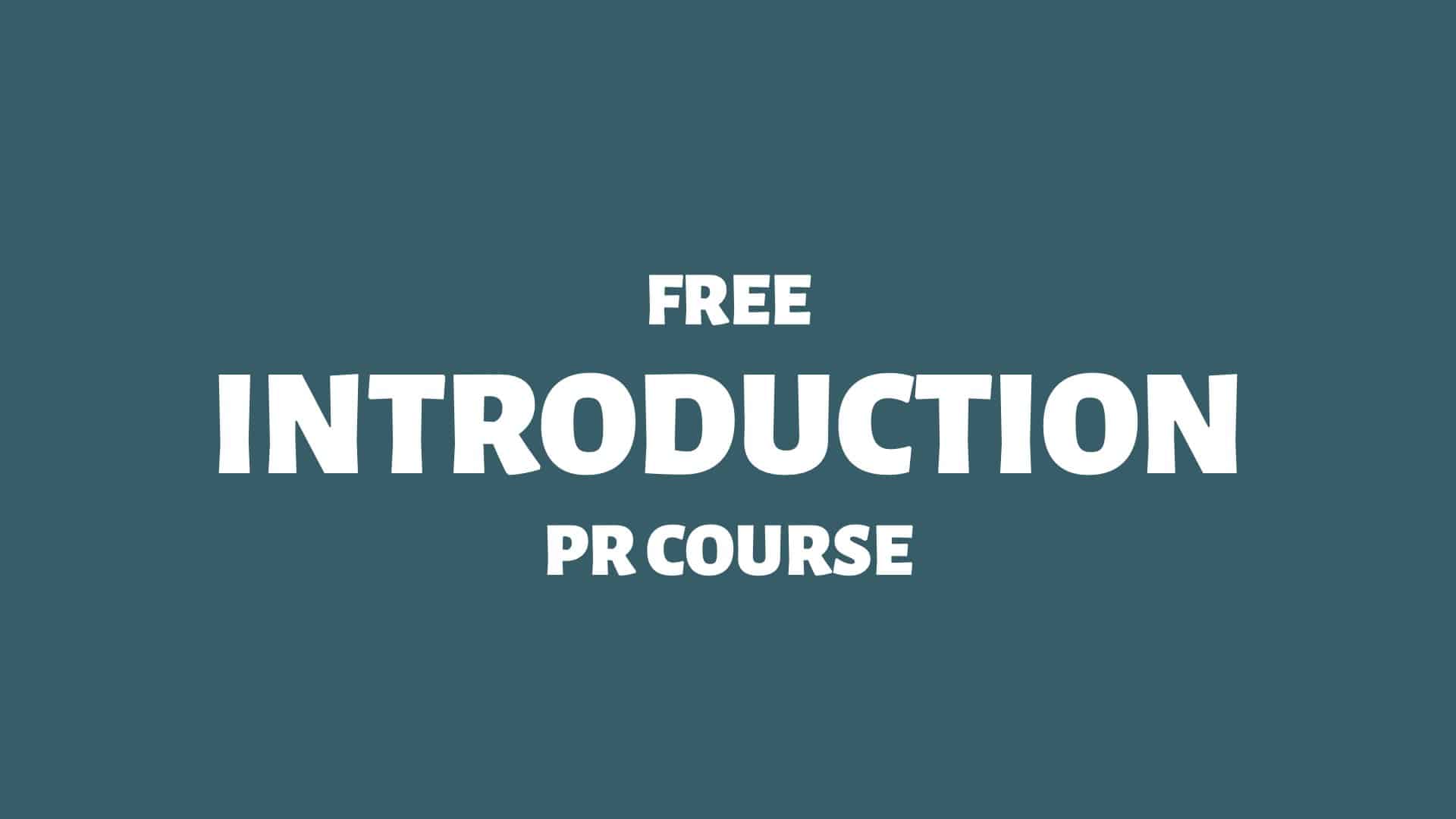Let’s discuss public relations vs media relations.
Media relations is one of many subsets of public relations. By using publicity, PR professionals can influence the news agenda and indirectly influence important publics.
Here we go:
Public Relations vs Media Relations
There are several different types of specialisation within the PR industry. One such specialisation is—media relations. 1Silfwer, J. (2021, January 5). The Stakeholders in Public Relations. Doctor Spin | The PR Blog. https://doctorspin.net/stakeholders-in-public-relations/
“Mass media campaigns primarily influence public agenda-setting, rather than directly persuading publics, rather influencing which issues and organizations are discussed.”
Source: Public Relations Review 2McCombs, M. (1977). Agenda setting function of mass media. Public Relations Review, 3, 89 – 95. https://doi.org/10.1016/S0363-8111(77)80008 – 8
Media Relations Responsibilities
Some PR professionals are media relations specialists. Their typical duties encompass a range of tasks related to managing and enhancing the organization’s reputation through the media.
Here are some of their core responsibilities:
Typical Media Relations Job Titles
Some typical job titles for media relations specialists are:
The relationship with journalists can sometimes be tense due to the different objectives of each field. 6Silfwer, J. (2011, October 17). Public Relations vs Journalism. Doctor Spin | The PR Blog. https://doctorspin.net/public-relations-vs-journalism/
Learn more: Public Relations vs Media Relations
Classic Media Logic: Beware the News
Classic media logic can be regarded as a rhetorical approach to PR theory.
“The position and size of articles on the front page is determined by interest and importance, not content. Unrelated reports […] are juxtaposed; time and space are destroyed and the here and now are presented as a single Gestalt. […] Such a format lends itself to simultaneity, not chronology or lineality. Items abstracted from a total situation are not arranged in causal sequence, but presented in association, as raw experience.“
Source: The new languages (1956) 7Carpenter, E. & McLuhan, M. (1956) The new languages. Chicago Review. 10(1) pp. 46 – 52.
Contrary to popular belief, classic media logic is not one single theory. Instead, it’s a collection of theories about how the medium and its context influence mediated messages.
“[…] each communication channel codifies reality differently and thereby influences, to a surprising degree, the content of the message communicated.”
Source: The new languages (1956) 8Carpenter, E. & McLuhan, M. (1956) The new languages. Chicago Review. 10(1) pp. 46 – 52.
Classic Media Logic Effects
Classic media logic is hypothesised to influence the news media in the following ways: 9Nord, L., & Strömbäck, J. (2002, January). Tio dagar som skakade världen. En studie av mediernas beskrivningar av terrorattackerna mot USA och kriget i Afghanistan hösten 2001. … Continue reading
“The dominant processes, established routines, and standardized formats which frame and shape the production of mass-media content, especially its representation or construction of reality, and its manufacture of news. Media logic intersects with commercial logic and political logic — confluences associated with such phenomena as tabloidization and the mediatization of politics. Media logic exists wherever mediation exists. It contributes to the shaping of social order in modern post-industrial cultures.“
Source: Oxford Reference 10Media Logic. (2023). Oxford Reference. https://www.oxfordreference.com/display/10.1093/oi/authority.20110810105357611

Learn more: Media Logic is Dead, Long Live Media Logic
The Media Blackout Tactic
Refusing to answer journalistic questions used to be a big no-no in public relations. However, this professional ethos is undergoing some changes.
More and more organisations are deliberately avoiding any interaction with traditional news media:
Media blackout = when an organisation refuses to engage with journalists to protect business interests and mitigate damage. Journalists criticise this practice as it obstructs investigative reporting and undermines societal transparency.
According to some organisations, media blackouts are a reasonable outcome of unfair rules of engagement in a post-truth media landscape:
Media minefield = the post-truth media landscape where interactions with legacy news media often result in deliberate misrepresentation. Organisations navigate this terrain cautiously to avoid damaging their reputation and public image.
The Media Analysis
To resolve the situation, we face two main challenges:
However, as a PR professional with 18+ years of experience, I believe we will fall short on both these challenges.
Traditional news media will continue to fall apart, and the erosion of trust in organisations will be one of the many contributing factors. Organisations will likely opt for post-truth strategies, leading to organisational corrosion from the inside out.
“Post-truth is a societal phenomenon, influenced by the expectation that honesty is the default position, and the public tolerance of inaccurate and undefended allegations in politics.”
Source: Nature 11Higgins, K. (2016). Post-truth: a guide for the perplexed. Nature, 540, 9 – 9. https://doi.org/10.1038/540009a
Instead, new “societal pillars” must emerge from the rubble: a new form of independent news media based on trust (not clicks or ideology) and a new form of successful organisations based on transparency (not avoidance or exploitation).
Learn more: The Media Blackout Tactic

THANKS FOR READING.
Need PR help? Hire me here.

What should you study next?
Spin Academy | Online PR Courses

Spin’s PR School: Free Introduction PR Course
Get started with this free Introduction PR Course and learn essential public relations skills and concepts for future success in the PR industry.
Introducing Public Relations
Public Relations History
Publics in Public Relations
Comparing Public Relations
Public Relations Resources
Learn more: All Free PR Courses
💡 Subscribe and get a free ebook on how to get better PR.

Annotations
| 1 | Silfwer, J. (2021, January 5). The Stakeholders in Public Relations. Doctor Spin | The PR Blog. https://doctorspin.net/stakeholders-in-public-relations/ |
|---|---|
| 2 | McCombs, M. (1977). Agenda setting function of mass media. Public Relations Review, 3, 89 – 95. https://doi.org/10.1016/S0363-8111(77)80008 – 8 |
| 3 | Silfwer, J. (2010, September 30). The Classic Press Release Template. Doctor Spin | The PR Blog. https://doctorspin.net/press-release-template/ |
| 4 | Silfwer, J. (2021, February 26). How to Write a PR Pitch: Step-by-Step Guide. Doctor Spin | The PR Blog. https://doctorspin.net/pr-pitch/ |
| 5 | Silfwer, J. (2023, December 21). The Media Kit: What To Include. Doctor Spin | The PR Blog. https://doctorspin.net/media-kit/ |
| 6 | Silfwer, J. (2011, October 17). Public Relations vs Journalism. Doctor Spin | The PR Blog. https://doctorspin.net/public-relations-vs-journalism/ |
| 7, 8 | Carpenter, E. & McLuhan, M. (1956) The new languages. Chicago Review. 10(1) pp. 46 – 52. |
| 9 | Nord, L., & Strömbäck, J. (2002, January). Tio dagar som skakade världen. En studie av mediernas beskrivningar av terrorattackerna mot USA och kriget i Afghanistan hösten 2001. ResearchGate; Styrelsen för psykologiskt försvar. https://www.researchgate.net/publication/271014624_Tio_dagar_som_skakade_varlden_En_studie_av_mediernas_beskrivningar_av_terrorattackerna_mot_USA_och_kriget_i_Afghanistan_hosten_2001 |
| 10 | Media Logic. (2023). Oxford Reference. https://www.oxfordreference.com/display/10.1093/oi/authority.20110810105357611 |
| 11 | Higgins, K. (2016). Post-truth: a guide for the perplexed. Nature, 540, 9 – 9. https://doi.org/10.1038/540009a |


